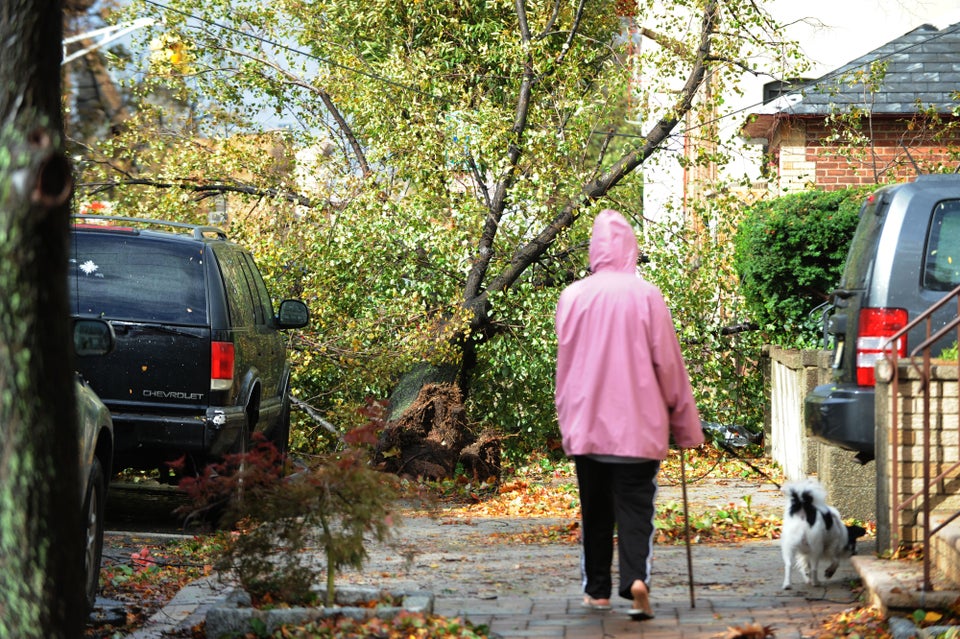
U.S. stock trading has resumed after a two-day interruption caused by Sandy. The opening went off without a hitch, but questions and criticisms about the shutdown remain.
New York City Mayor Michael Bloomberg rang the opening bell at the New York Stock Exchange on Wednesday morning, the first day of stock trading since Friday, October 26. This was the longest weather-related stock-market shutdown since 1888. The Nasdaq stock exchange also resumed activity.
Despite worries about the possibility for market mayhem, it ended up being a mercifully quiet trading day. The Dow Jones Industrial Average jumped at the 9:30 a.m. ET by about 70 points, then drifted lower throughout the day. By the close at 4:00 p.m. ET, the Dow ended the day down about 11 points, or about 0.1 percent. The S&P 500-stock index ended the day almost completely flat. The tech-heavy Nasdaq composite index fell down about 0.4 percent, dragged down by a nearly 2-percent decline in the share price of Apple.
Trading volume was unusually light, likely because many traders were still offline after the storm. The NYSE invoked "Rule 48," a procedure designed to smooth out volatile market openings, and trading was smooth in the opening minutes.
In one of the few notable hiccups in trading, Knight Capital -- a high-frequency trading firm that infamously lost $440 million in the space of 45 minutes in August due to a trading glitch -- had trouble with a backup power generator and had to route orders to other firms.
Otherwise the day was surprisingly quiet, considering the circumstances. It was the last day of the month, when many mutual funds and other money managers often try to shuffle their portfolios to lock in gains. The October jobs report and the presidential election, two huge events for the market, are approaching. Many questioned just how prepared the financial system was for the opening.
"I’ve spoken/email/Tweeted to a substantial number of traders and fund managers — very few people seem to be operating normally, regardless of where they live," wrote Barry Ritholtz, CEO and director of research at FusionIQ, on his blog, The Big Picture. "Lots of quote issues, Bloomberg not running normally, connectivity problems. This is not remotely an ideal set of conditions for trading."
Many others wondered why the stock market needed to be closed in the first place. Most trading is done electronically, meaning very few people need to be involved; the New York Stock Exchange is in many ways a glorified television studio these days. Humans do need to be involved to watch over the machines and manage trades, but critics wondered why there was not an agreed-upon contingency plan in place to have some of those humans do the watching far away from New York City.
"They really should stay open during predicted weather events, to show that you have liquidity," Jeremy Siegel, finance professor at the Wharton School of Business, told Bloomberg television. "It's an extraordinarily important aspect of any market. If somebody needed money in the past two days, they were basically frozen out of the market."
The NYSE initially planned to open trading electronically on Monday, the day Sandy hit, but was talked out of it by regulators and investment banks, according to Fortune magazine's Stephen Gandel, for reasons that aren't entirely clear.
Still, the market's re-opening was a hopeful sign of some trace of normalcy returning to a storm-wracked city.
"We're the only place with food, lights and water south of 34th Street right now," NYSE chief Duncan Niederauer told Bloomberg TV.
Many workers slept at the exchange overnight or came in several hours early to help make sure the opening was smooth.
The day's trading reflected the effects of the storm: Some of the biggest gainers were retail home-supply chains such as Home Depot and Lowe's, up 2 percent and 3 percent, respectively. Insurance companies such as Allstate and Travelers were down. Northeastern utilities such as ConEd were slightly higher.
Gasoline futures jumped about one percent, as traders priced in the effects of refineries shut down by Sandy -- although some of those refineries are already coming back online. Crude-oil and gold prices rose about half a percentage point.
